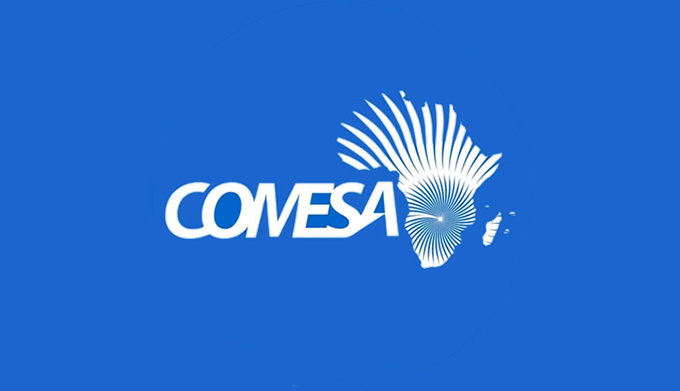Can the Sahel recapture its lost glory?

Tom Collins Correspondent
Across much of West Africa a trend has developed. As the Atlantic Ocean feeds the economic powerhouses on the coast, the Sahara has given way to instability, contraband and disrepair. This wasn’t always the case. In fact, the very opposite was true.
Transit routes criss-crossing the desert connected once-powerful cities like Timbuktu, Gao, Djenné and Kano with North Africa and the Middle East. Goods like gold, salt, cotton, leather and ostrich feathers were transported and traded in large caravans and it was the interior that flourished.
Mansa Musa, 14th-century ruler of the Mali Empire, is widely considered as the richest person ever to have lived. Indeed, the fortunes of great and powerful empires like Songhai, Mali and Kanem-Bornu, among others, ebbed and flowed with the idiosyncrasies of the trade.
In the present day much has changed. The trade declined due to factors including the arrival of European colonialism, which prompted the movement of goods towards the coast, instead of through the Sahara. Supply chains were disrupted and the trans-Saharan trade and the cities it once supported began their decline.
Now, policy-makers based in the south are at odds over what to do with the rising lawlessness of the Sahel. Security imperatives frequently trump development and strategy is muddled in the absence of any panacea.
Yet how could a better understanding of the Sahel’s economic history have a positive influence on developmental policy in the region? What, if anything, remain of the old trade routes? And how could they be re-established?
The trade and its decline
While the Sahara has always cradled robust internal trade, the peak of the activity was from between the eighth to 17th centuries. Over this time period the nature of the trade took many different forms. “In terms of the peoples and goods involved, they shifted across time and space,” explains Ghislaine Lydon, Associate Professor in the Department of History at the University of California, Los Angeles. A few goods and locations, however, were key.
Up until the 18th and 19th centuries, gold was traded heavily, reveals Lydon. Muslim and Jewish traders in North Africa would invest in camel caravans heading south to places like Timbuktu to exchange European goods for gold. Prior to this the Gao empire was recorded as trading gold, precious stones, animal hides and enslaved Africans across the Sahara to Egypt.
Cotton and leather were also important commodities. Kano, in north-eastern Nigeria, was the centre of such commerce. “Kano was a major centre in indigo dying and that kind of cloth was valued greatly in the northern Moroccan markets,” says Lydon.
“Moroccan sultans would wear indigo died cloth as regalia but it was also important within the Saharan oases for nomadic peoples building tents and the like.”
Indeed, Moroccan port-towns like Essaouira got rich as exchange points between West African and European markets. Moroccan leather, as it was known and used in Spain for paper production, was in fact mostly sourced from Kano; also an important centre for animal hide production.
The trans-Saharan trade, then, was a nebulous and lucrative web of connections running goods between North Africa, West African empires and city-states and the Near East. Its downfall mostly came about as a result of the mercantile policies of Europe’s rising economic powers.
“The trans-Atlantic trade really explains the demise of trans-Saharan trade,” argues Michael Gomez, Professor of History and Middle Eastern and Islamic Studies at New York University.
Raw materials and valuable commodities were drawn from West Africa’s interior and exported to Europe and North America via the ocean. This was to have a profound effect on the economies of the Sahel as it no longer made commercial sense to move goods through the desert.
Today, West Africa continues to be defined by this economic shift. Economies are geared towards coastal exports; pushing wealth to the coast while the cities of the Sahel are left neglected.
Another factor explaining the decline of the trade was the gradual downfall of West Africa’s empires due to competition and warfare. Morocco’s victory over the Songhai Empire in the 16th century severely impacted the region’s ability to trade and the amount of caravans crossing the Sahara gradually began to shrink.
Routes repurposed
Not all of the connections between the Sahel and North Africa or the Near East have been lost. Gomez argues that northern Nigeria continued legitimate trading across the Sahara with Libya well into the 19th century. However, this is the exception not the rule. “The value of goods going into North Africa from northern Nigeria palls in comparison to the goods going to the Atlantic,” he says.
However, what does suggest a dynamic if macabre repurposing of the old trade routes is the recent amplification of human and contraband trafficking across the desert. Some of the Sahelian communities involved in these illicit practices are the direct descendants of ex-caravaners, argues Lydon.
With very little meaningful development in the region, these communities have exploited old knowledge to generate income and provide a livelihood. While these Sahel economies are largely informal, it does suggest dynamic and inter-connected markets which could be useful to policy makers looking to develop the region.
Islamist insurgency in the region can also be directly linked to the demise of formal trans-Saharan trade and its associated economic hubs. Although movements have been present in the region for quite some time, the reactionary and secessionist nature of groups like Boko Haram and Al-Qaeda in the Islamic Maghreb can be linked to economic marginalisation as much as ideological goals. “These areas offer very few opportunities,” remarks Lydon. “Joining these networks provides opportunities to prosper in a new regime environment beyond the curfew of nation states.”
One caravan, one 4×4
Gomez draws an interesting comparison between any project to revive trans-Saharan trade and China’s recent historically tempered attempt to revive the old Silk Road in the form of the ‘One Belt One Road’ initiative. “China is doing so in a very concrete way,” he expands. “This is not just about nostalgia, it’s about moving forward and they’re able to do it because the sea routes and overland routes still have some utility.”
By re-imagining old trade routes through robust policy, then, China is hoping to make significant gains.
Evidently China – with its enormous wealth and central strategy – has very little in common with a fractured combination of some of the world’s poorest states. Yet the history upon which the revisionist strategy is based has marked similarities to the Saharan experience – only the vision and capacity differ.
Morocco has recently been making some moves in this regard. As mentioned, the kingdom has an often-overlooked history of trading and interacting with West Africa. King Mohammed VI and his government have been making a concerted push south for many years. Since October 2016 he has visited at least 14 African countries, travelling with large trade delegations, and signing a host of bilateral deals.
The African Development Bank estimates that 85 percent of Morocco’s outward foreign direct investment goes to sub-Saharan Africa. Trade lags behind, but this too is growing. Exports of Moroccan goods to West Africa tripled from 2006 to 2016. Whether the strategy is influenced by any wish to breathe life into old connections is unclear, but it certainly mirrors old trends.
Morocco aside, the difficulty of re-establishing meaningful trans-Saharan trade comes down to the question of both goods and markets. In today’s world, with a glut of cheaply manufactured goods and easy supply chains, what products could cities like Gao and Kano manufacture and to which markets?
Quite simply, it’s very difficult to see how the Sahel could compete, especially as the region is also lacking in any significant natural resources. Basic goods are traded among Sahel states but any meaningful wealth creation requires a competitive product and an obvious market.
In fact, investment into infrastructure will often follow the clear identification of market access. Many governments and businesses see little point in investing in the Sahel’s cities as there are no obvious attached markets.
If the connections between the Sahel and North Africa and the Near East were resolutely re-established then perhaps West African governments would see sense in setting up manufacturing plants in the north; looking to move goods across the Sahara. Building and expanding on Kano’s leather and animal-hide industrial roots could be just one example.
The associated problems, however, are numerous. Instability in the Sahel and lack of basic infrastructure mean setting up these connections would be an onerous task, not least for West Africa’s cash-strapped governments. Only, understanding the region’s past and how it previously afforded great access to markets may lead policy makers to see greater potential in these regions.
A different imagination
The history of the Sahara could be repurposed in a much less capital-intensive way: through tourism. The recent recognition of Timbuktu’s plentiful Islamic manuscripts has spurred global interest in Mali’s most celebrated town, and the attention could be re-directed across the Sahel through an understanding of trans-Saharan trade.
Sadly, the 2012 Tuareg rebellion and occupation of Timbuktu derailed all plans to boost the city’s tourist credentials but it’s likely the coveted destination will one day draw large crowds.
Other cities like Gao and Kano – all with rich histories – should take inspiration from Timbuktu and governments should look at presenting them and the wondrous Saharan world they were a part of to a global audience.
Gomez offers some advice. “First you have to present these histories to a global audience and in a way that would generate interest in these earlier periods,” he says. “Second, you have to establish, maintain and curate the material culture attached to these areas. This will come primarily in the form of manuscripts and mosques; Westerners want to see something tangible.”
Certainly, any tourism supported by a re-purposed Sahelian history could fill the income and employment gap throughout the region. Infrastructure and security are obvious bottlenecks but nonetheless the sector should be included within the region’s prospects.
Reclaiming history is also of central importance in countering Islamic extremism. Boko Haram, for instance, have distorted north-eastern Nigeria’s past for their own use. “What Boko Haram have done is claimed to be the inheritors of the 19th century Usman dan Fodio Sokoto Caliphate,” explains Gomez. “They have hijacked that history for their own purposes. So with tourism there’s an opportunity to educate a larger population about what the real history was and the ways in which it is different from Boko Haram’s.”
Indeed, these areas feel disconnected and marginalised from the rest of Nigeria and the world, and have reacted by opting for an exclusionary identity and ideology. If, through tourism, the region understood a different version of its past, one which included cosmopolitan and inclusive links to North Africa and the Middle East, then perhaps inhabitants of the Sahel would find less use in restrictive identities.
As it stands, the history of the trans-Saharan trade has faded into the abstract realms of scholarship and academia. That history, if fully realised, could be a powerful tool in the region’s development. – New African









Comments